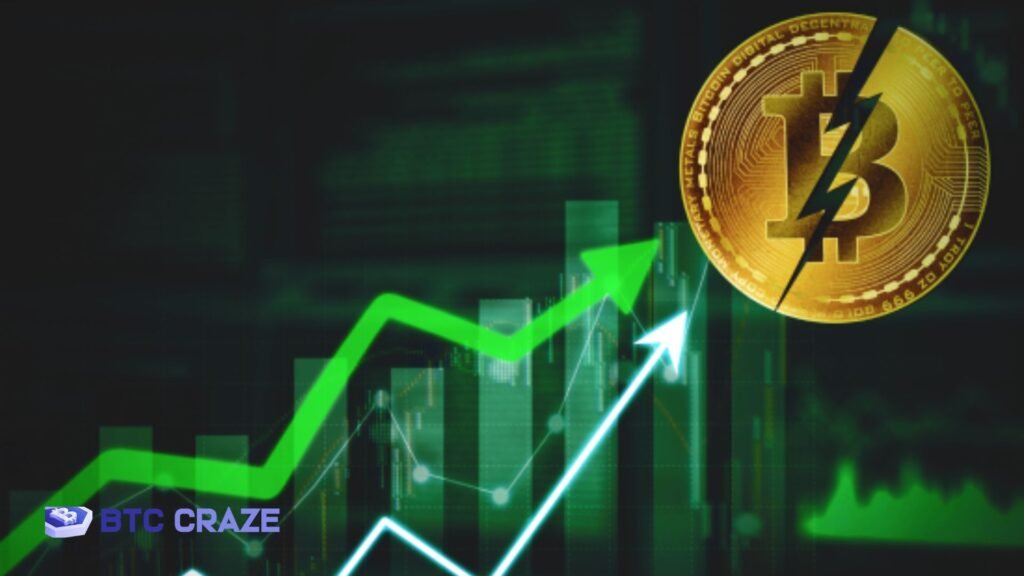Bitcoin Halving Cycles: One of the most anticipated cryptocurrency events in recent years has been the Bitcoin halving cycle. The rate of Bitcoin mining, the process of creating new Bitcoins, is automatically reduced every four years. In what is formally called a “halving,” the incentive to mine Bitcoin is cut in half. Not only do the halving cycles intrinsic to Bitcoin’s coding keep it deflationary, but they also significantly impact Bitcoin and cryptocurrency market price fluctuations. As a result of their effects on scarcity, market psychology, and investment methods, these cycles will continue to shape the cryptocurrency industry going forward. The effects of Bitcoin halving cycles on the development of cryptocurrency marketplaces are discussed in this article.
Perception of Bitcoin Halving Cycles
The technology that underpins Bitcoin ensures that there can never be more than 21 million Bitcoins mined, making it a resource in short supply. The block reward for Bitcoin is cut in half typically every four years, or after every 210,000 blocks, to control the rate at which new Bitcoins are issued and to ensure that there remains a scarcity of Bitcoins over time. When Bitcoin was first introduced in 2009, miners were paid fifty bitcoins (BTC) for successfully mining a block.
This reward was reduced by a factor of two in 2012 when it was reduced to 25 BTC, then by 12.5 BTC in 2016, and subsequently by 6.25 BTC in May 2020. At the next halving, which is anticipated to occur in 2024, the reward will be reduced to 3.125 BTC per block. An element of deflationary dynamics is introduced into the Bitcoin ecosystem using this controlled reduction in supply. The halving events are crucial because they limit the quantity of new Bitcoin entering circulation. This tightens the supply of Bitcoin at a time when demand is normally increasing. Because Bitcoin was the first cryptocurrency ever created and is still the most extensively used cryptocurrency, these halvings tend to cause swings in the price of Bitcoin and the cryptocurrency market altogether.
Scarcity Rule: Supply-Demand Dynamics
The concept of scarcity drives Bitcoin Halving Cycles. Bitcoin production is slowed by halving occurrences, which slows supply growth. The demand for Bitcoin is increasing as many individuals, institutions, and governments recognize its value as an alternate method of transaction and a store of wealth. As a result of each halving, the supply has decreased, which has led to price increases when demand is higher than supply. Due to the initial halving that occurred in 2012, the price of Bitcoin increased from $12 to more than $1,000 by the end of 2013.
After the halving in 2016, the price of Bitcoin increased from $650 to about $20,000 in 2017. For the first time after the halving in 2020, Bitcoin climbed above $68,000 in 2021. This relationship between supply and demand lends credence to the notion that Bitcoin halving events are the primary driver of price appreciation. Because Bitcoin is becoming more difficult to mine and rare, its value is increasing, attracting investors. This deflationary tendency over time drives the appeal of Bitcoin and other cryptocurrencies and investment in them.
Investor Sentiment and Market Psychology
Bitcoin halvings are predictable, which affects investor sentiment and market psychology. Investors eager to buy Bitcoin before halving occurrences generally raise buying pressure in the months running up to them. Pre-halving accumulation can boost Bitcoin’s price by “front-running the halving.” Miners sell less after halving because the payout for each block decreases. After a halving, miners have fewer coins to sell, reducing market supply-side pressure.

This crypto market cycle of anticipation, accumulation, and price spikes is self-reinforcing. Each halving reinforces investors’ perception that Bitcoin is a deflationary asset with long-term potential. Regular price increases during halving occurrences have led to adopting “HODL” (hold on for dear life) tactics, where investors acquire and hold Bitcoin through market instability, expecting big gains. This bullishness goes beyond Bitcoin. Bitcoin, the largest cryptocurrency, generally sets the market tone. Altcoins often rise in price alongside Bitcoin due to greater liquidity and investor interest in the crypto ecosystem.
Impact on Mining and Network Security
When Bitcoin halving occurs, it directly impacts the mining business. Users are encouraged to “mine” additional Bitcoins for every transaction they validate and add to the blockchain, which helps maintain the network’s integrity. After halving each block’s incentive, miners will drastically reduce overhead or significantly increase output to maintain a profit.
Some smaller or less effective miners may decide to shut down their operations due to the drastic reduction in profit margins caused by halvings. The hash rate, which measures the total computer power defending the network, may temporarily fall if mining activity decreases. Nevertheless, the Bitcoin network has consistently recovered from assaults due to more efficient miners and technological developments, such as improved mining hardware. The smaller the benefits and the more difficult it is to mine, the more people consider Bitcoin valuable.
Broader Market Implications
Beyond their obvious effects on mining and price, the halving cycles of Bitcoin have far-reaching consequences. The entire cryptocurrency ecosystem is becoming increasingly impacted by Bitcoin’s market fluctuations as it gains prominence. Significant money inflows into altcoins are common when a halving sparks a Bitcoin bull run, as it often does for other digital currencies.
In bull markets driven by Bitcoin, the value of many altcoins rises, especially those that follow a limited supply model or have deflationary dynamics comparable to Bitcoin’s. Because investors spread their bets across several cryptocurrencies, Ethereum—the second-largest cryptocurrency by market capitalization—usually reaps the rewards of these cycles.
In addition, the media and institutions take notice of Bitcoin’s halvings. Hedge funds, family offices, and companies have increased their participation in Bitcoin with each halving cycle. For instance, during the bull run of 2020 and 2021, Bitcoin received significant investment from Tesla, MicroStrategy, and Square, which helped to legitimize the asset and encourage its adoption by more conventional investors.
Bitcoin Halving Cycles: Future of Crypto Markets
A fundamental component of the crypto market’s long-term investing plans is Bitcoin Halving Cycles, which are both regular and predictable. Looking ahead, we still don’t know how the Bitcoin and cryptocurrency ecosystem will be affected by future halvings. It is possible that after the halving, Bitcoin’s price cycles would stick to a pattern of steep gains, consolidation, and correction. Market fluctuations might present possibilities for astute investors due to their cyclical nature. The effect of supply halvings will be less noticeable as the block rewards of Bitcoin continue to decline. Nevertheless, Bitcoin’s finite supply has the potential to push values to unprecedented levels if demand keeps on increasing.

The development of the bitcoin industry is another critical factor to think about. The future of cryptocurrency markets may be less tied to Bitcoin’s price fluctuations as decentralized finance (DeFi), non-fungible tokens (NFTs), and other blockchain-based applications gain traction. Diversifying the elements that impact market trends, altcoins, and emergent initiatives has the potential to play a larger role in shaping market dynamics. Still, Bitcoin’s halvings will be significant milestones because the cryptocurrency ecosystem is based on it. Digital gold is a scarce and valuable asset that continues to entice investors seeking long-term wealth preservation.
Final Thoughts
Bitcoin Halving Cycles have a huge impact on the direction the cryptocurrency market is heading. Because they induce scarcity, affect investor mood, influence mining dynamics, and fuel wider market movements. Bitcoin halvings are extremely important to the trajectory of the cryptocurrency ecosystem. In preparation for the subsequent halving, market analysts and investors will closely monitor the market to observe how it responds to the next event.
Also Read: What will be different with the halving of Bitcoin this time?
FAQs
Q1. What is a Bitcoin halving cycle?
A Bitcoin halving cycle occurs approximately every four years, reducing the reward for mining Bitcoin by 50%, which slows the rate of new Bitcoin entering circulation.
Q2. How do Bitcoin halving cycles affect Bitcoin’s price?
Halving cycles reduce supply while demand often rises, leading to significant price increases due to scarcity.
Q3. Why do investors focus on Bitcoin halving events?
Investors monitor halving events because they have historically triggered bullish market cycles, creating opportunities for potential gains.
Q4. How do halvings influence the broader cryptocurrency market?
Bitcoin’s halvings often lead to price surges, which can fuel optimism and investment across the entire cryptocurrency market, affecting altcoin prices as well.
Q5. What is the long-term impact of Bitcoin halvings on the crypto ecosystem?
Halvings reinforce Bitcoin’s deflationary nature, driving its value and adoption, and they continue to play a pivotal role in shaping market trends.

